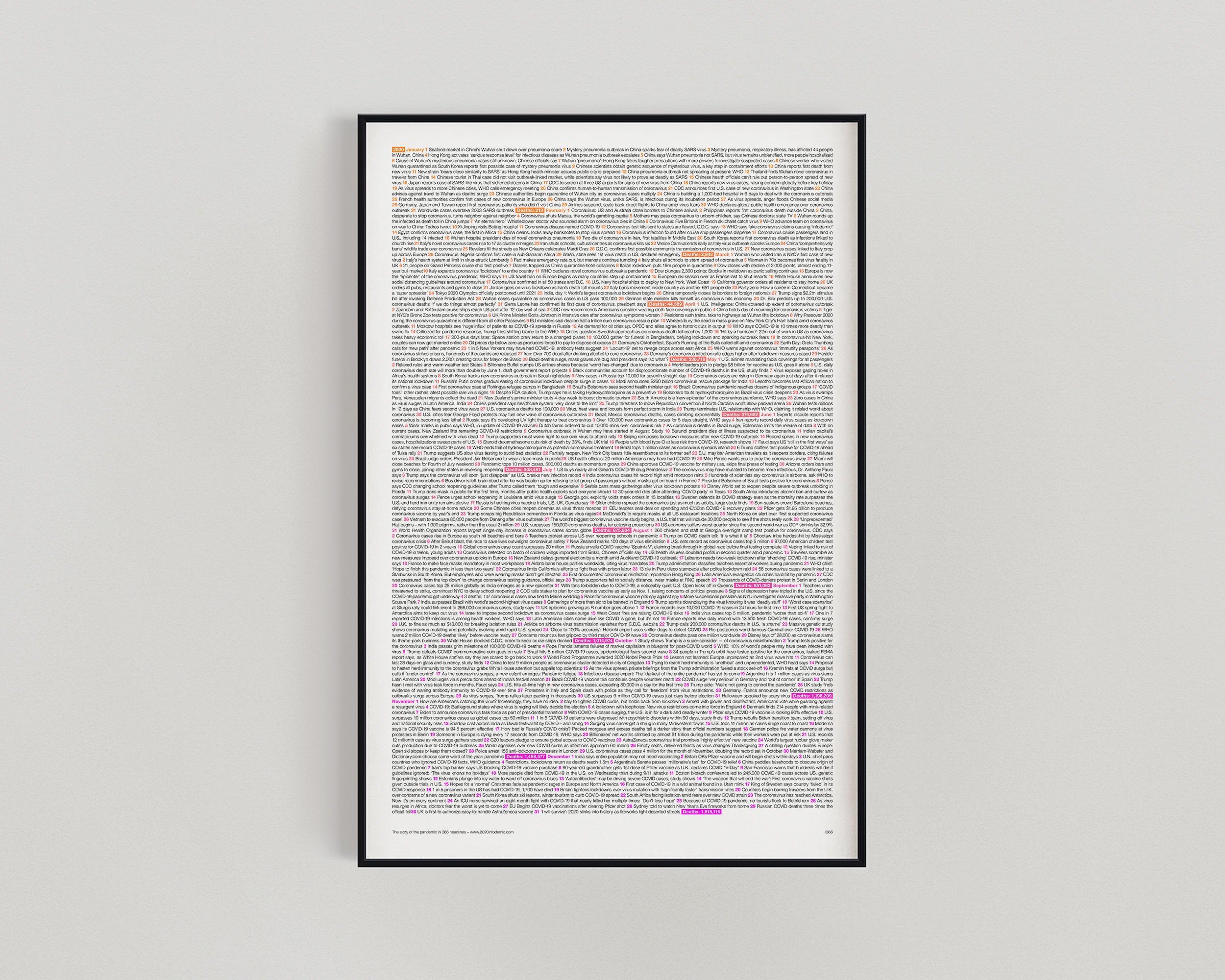
2020 Infodemic
“We’re not just fighting an epidemic; we’re fighting an infodemic”
Can the story of the pandemic be told in 366 headlines?
Ghebreyesus was referring to the danger of misinformation spreading faster than information. Whether reliable or not, news about the coronavirus in 2020 grew as exponentially as the virus itself. On January 1, the news was distant and isolated – a market shut down by the authorities in Wuhan, China. The virus moved geographically; there was a sense of approaching danger, but political leaders were quick to reassure. By March 11, WHO had declared the coronavirus a global pandemic.
The headlines became shocking – things that had seemed unthinkable only a few days earlier were fast becoming reality. To manage the multiplying reports from every region in the world, news outlets switched to live-blogging the news. The format is often used for a local disaster or a bad day on the stock market – but now served to report on a public health emergency that affected everyone, everywhere.
I started to collect headlines about the 2020 pandemic as a way of making sense of the infodemic. The project is both a memorial and an attempt to answer the question “How did we get here?”
2020 Infodemic is available as a limited-edition of 366 hand-numbered posters, printed with fluorescent inks on 216gsm art paper.





Method
Although we know the Coronavirus existed and was already a global traveler before 2020 (France's first known case 'was in December'), 2020 Infodemic begins January 1. That’s when the first headlines started to appear in the US – and when the wet market in Wuhan was shut down.
As the virus spread to every continent, and every part of life and the economy was impacted, it became difficult to choose a representative headline for any given day. Often, taking a longer view helped, for example on January 25 Shanghai Disneyland and other China tourist destinations were closed down, but that isn’t as surprising in retrospect as it was at the time. On the same day French health authorities confirmed the first cases of new coronavirus in Europe which gave us more of an idea of how quickly the virus was moving.
The one-headline limitation helps to focus on actual events and less on the commentary and noise around them. However, at the same time it wasn’t possible to cover some of the great human-interest stories too.
As the “epicenter” of the pandemic shifted from Wuhan to Lombardy to NYC and beyond, the headlines moved with it, but stories from other countries and regions too. The reductive nature of the project means that some stories will slip through the cracks, and that “Virus exposes gaping holes in Africa’s health systems” is inadequate to describe events across an entire continent.
I tried to choose the most succinct headline from reputable sources, although every news outlet has its own bias. All headlines are unedited, so there is inconsistent capitalization, and assume all errors are (sic). I did however, remove any repetitive or unnecessary section headings such as “Coronavirus:”